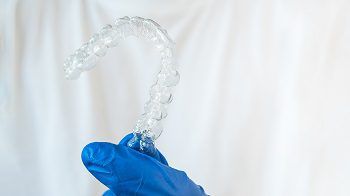Does Invisalign hurt?
Clear dental aligners are a popular alternative to traditional braces. One such brand of these orthodontic devices is Invisalign. While Invisalign is more comfortable than metal braces, you may still experience mild pain or discomfort.
According to the American dental association, the risk of pain appears to be greatest during the first week of using invisible teeth aligners.
Pain due to these aligners are also affected by an individual's pain tolerance. It is even possible to feel no pain at all. However, if you experience pain for more than a week after first using your aligners, this could indicate a more serious condition that your orthodontist should investigate.
Does Invisalign cause pain?

Any pain or discomfort caused by Invisalign is usually only transitory, with the highest risk occurring in the first week of wearing your new aligners.
In fact, according to a study, 83 percent of invisible aligner users become comfortable with the dental aligners after a week.
Statics indicate that plastic or clear aligners cause mild and temporary pain and that not every user experience pain. However, you may be more prone to pain with dental aligners if you have:
- A decreased pain threshold
- Sensitive teeth and gums sensitive
- Gingivitis
In the first week of wearing your new aligners, you may notice mild pain in the following parts of your body:
- Teeth
- Jaw
- Tongue
It is also possible to have momentary pain in only one tooth. Tooth pain typically indicates that your aligners are gradually adjusting your teeth. Moreover, each aligner tray adjustment may not cause pain in the same tooth, and any discomfort should subside within a few days. If you experience any of the following symptoms, you should contact your dentist right away:
- teeth or gums bleeding
- sensitivity to hot or cold temperatures
- pain during eating, drinking, or swallowing food
- pain accompanied by facial edema
How long does the pain last?
Because Invisalign requires new trays every two weeks, moderate pain and discomfort are possible during the initial few days of each cycle. However, these symptoms may become less severe as you become more accustomed to wearing your aligners.
Invisalign vs. Braces

Invisalign is less painful than traditional braces. These aligners use plastic instead of metal wires and brackets to straighten your teeth. Therefore, Invisalign's transparent plastic may be more comfortable to wear.
According to American Dental Association, the pain associated with clear aligners and traditional braces often decrease after 3 months of use.
Even if you feel discomfort at the beginning of your new trays every couple of weeks, the overall Invisalign process takes less time than metal braces – 12 to 18 months vs. up to 5 years, according to the American Dental Association.
Furthermore, because of sharp edges and protruding portions, some people find the metal and wire used in traditional braces uncomfortable. These may also cause discomfort to your gums.
When to call your orthodontist?
Contact your orthodontist if your Invisalign trays continue to cause pain after a week. They may be able to alter the aligners themselves by filing down the front edges, for example, if they are bothering your gums.
Keep in mind that switching to new trays for two weeks may cause mild discomfort. However, if the pain is worse than the last set or worsens after a few days, you should see your orthodontist.
In the case of continuous pain, your orthodontist may alter your trays to make them more comfortable to wear.
Conclusion
Dental appliances, even clear aligners, can cause pain and discomfort. However, Invisalign is regarded to be less uncomfortable overall than traditional braces. These devices may also be more effective than metal braces in correcting tooth alignment.
Invisalign may be a better option than fixed metal braces if you are concerned about pain from dental appliances. But it is important to remember that everyone's experiences and pain or discomfort differ. Clear aligners cause pain in the initial few days of your new trays, which you must replace every two weeks.
Hence, don't hesitate to contact your orthodontist if you are experiencing continuing or worsening pain while using Invisalign.
Contact your Danville dentist, Dr. Hoss Abar, DDS, MSD at Danville Orthodontics to know more about Invisalign.
Resource:
Braces Vs Invisalign: Which Is Better For You?
This media/content or any other on this website does not prescribe, recommend, or prevent any treatment or procedure. Therefore, we highly recommend that you get the advice of a qualified dentist or other medical practitioners regarding your specific dental condition.
